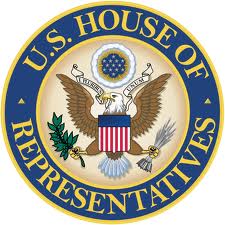The National Endowment for the Arts has been directed by the US House Appropriations Committee in its report to Interior  to continue the American Jazz Masters Fellowships and dump its proposed American Artists of the Year honors. The report also supports continuation of the NEA’s National Heritage Fellowships program (but not its Opera Honors) and recommends a 2012 NEA budget […]
Archives for 2011
Urban Realism and Treme
“Life is glorious and vibrant and joyous at points, but it is essentially tragic. That’s not a unique David Simon perspective.” So sayeth David Simon, (pictured left; right is a Mardi Gras Indian portrayed by Clarke Peters), executive producer with Eric Overmyer of Treme, in a long interview on Salon conducted by Matt Zolar Seitz.  The HBO series about […]
Hurray for Treme
“Do Watcha Wanna,” the season finale of Treme, had everything I watch the series for: Compelling characters embodied by terrific actors; plausible and suspenseful quick-cutting across and interweaving of plot strands; confident command of realities afflicting post-Katrina/pre-Gulf oil spill New Orleans, and the extraordinary depiction of living, breathing, hugely enjoyable music as a central factor […]
Symphonic “jazz” compositions, big bands and holiday blasts
The American Composers Orchestra readings of short symphonic works by jazz-oriented composers which I wrote of in my CityArts column and posted about here are now available to hear, thanks to Lara Pelligrinelli at NPR’s A Blog Supreme. The 23rd annual BMI/New York Jazz Orchestra concert, featuring “New Works for Big Band” and the naming (not […]
Jazz in Jordan: Yacoub Abu Ghosh explains and plays
Jazz and its evolution goes on everywhere – as bass guitarist/bandleader/composer/producer Yacoub Abu Ghosh explained and demonstrated to me in Amman, Jordan last March. Ghosh and his Stage Heroes performed at their weekly gig at Canvas Cafe Restaurant Art Lounge. His new album As Blue As The Rivers of Amman is due to drop July […]
American Composer Orchestra: Jazz composers welcome
The American Composers Orchestra gave eight jazz-oriented composers a year to work up five minute pieces and composer-mentors to help, then staged readings conducted by George Manahan during one of the busiest weeks of the jazz summer. Read about it in my latest CityArts column. Harris Eisenstadt, drummer and composer, and his score for “Palimpset” […]
New NEA Jazz Masters: A classy last class
The National Endowment for the Arts’s final designated Jazz Masters are all worthy: drummer Jack DeJohnette, saxophonist Von Freeman, bassist Charlie Haden, singer Sheila Jordan and trumpeter-educator-organizer-gadfly Jimmy Owens have had long and profoundly influential if not broadly celebrated or financially rewarded creative careers. So much the worse that this 30 year program highlighting genuine American artistic […]
More on Scott-Heron — artist in the American tradition
I turned to the recordings of Gil Scott-Heron after writing that he should have and did known better than to abuse drugs as he did, leading to his decline and demise. They make me ever more impressed with his scope and intensity, in both long ago and recent work. His 2010 recording “Me and the […]
Gil Scott-Heron, hard-eyed realist, dead of self-inflicted escapism
Gil Scott-Heron, dead at age 62, was a poet, prophet and spokesperson of the black urban American experience. A merciless and unsentimental truth-teller when he emerged on the scene in the ’70s, by telling Afro-identified kids dancing to Motown and grooving on psychedelic rock that “the revolution will not be televised” he meant that the […]
Celebrating jazz excellence — Awards, honors and privileges
The NEA zeroes out its Jazz Masters program, the Grammys cuts categories so pop best-sellers regain prominence vis a vis less obviously commercial stars, but the Jazz Journalists Association’s 15th annual Jazz Awards — to be held June 11, 2011 with an afternoon gala with all star music at City Winery, NYC, satellite parties hosted by […]
South African jazz hero Zim Nqgawana dies, age 52
Neil Tesser has written an informative post about Zim Nqgawana, the South African jazz musician who died at age 52 of a stroke May 10. Ngqawana, whose name is pronounced with a glottal “click” between the “N” and first “a,” performed at the 2007 Columbia/Harlem Festival of Global Jazz,” curated by George E. Lewis of […]
CityArts New York June jazz fests bustin’ out-all-over supplement
CityArts New York let me play jazz supplement editor. Read my lead feature on upcoming in June the NYC Blue Note Jazz Festival, UnDead Festival, gigs everywhere and more respect! Also Kurt Gottschalk on the Vision Festival’s backstory, David Adler on three successful, smart, younger jazzers, snapshots of Brazilian drummer Adriano Santos, Korean singer (of Portuguese Yeahwon […]
Steve Reich @ Carnegie Hall @ 75, with devotees
Composer Steve Reich, age 75, knows secrets of correlating pulsating rhythms and interlocking layers of sycopated melodic patterns which he’s eager to reveal in every work he writes. His musical signature is so unwavering it might veer into self-parody, but for the vigor and commitment of his performers. At Carnegie Hall last night four energized […]



